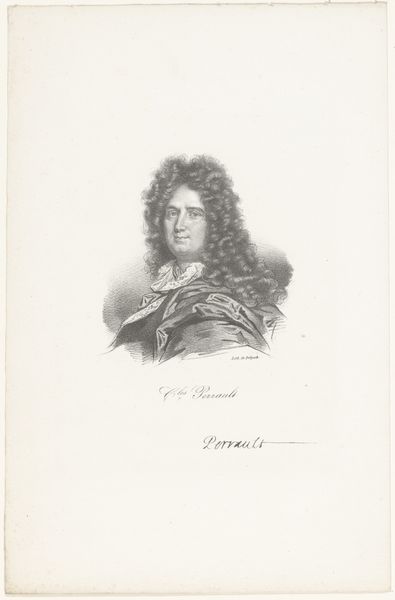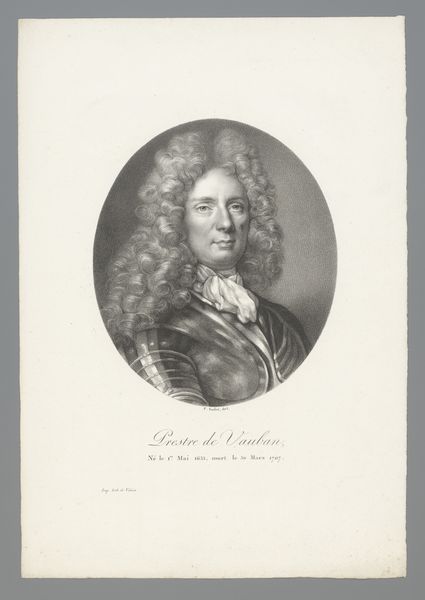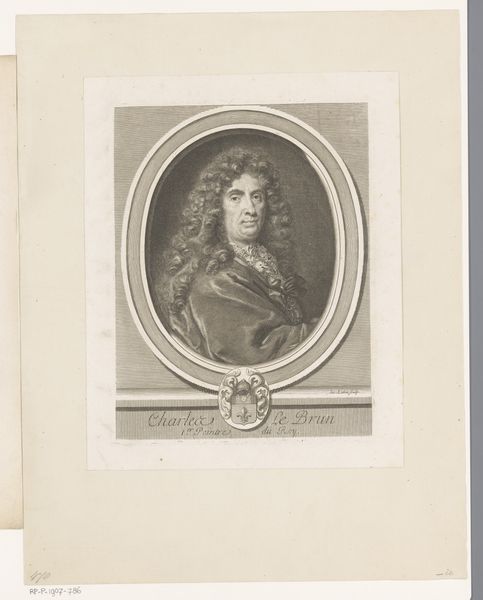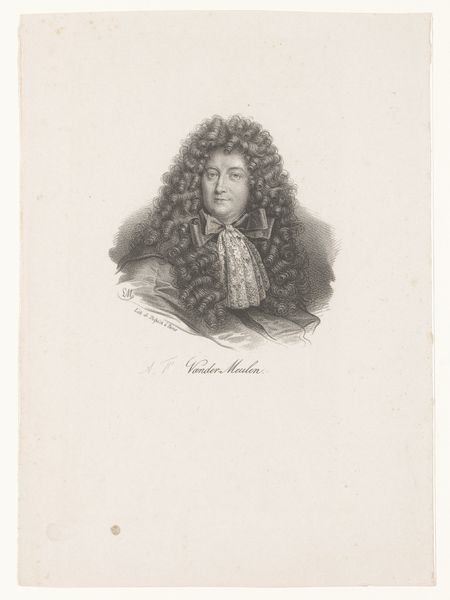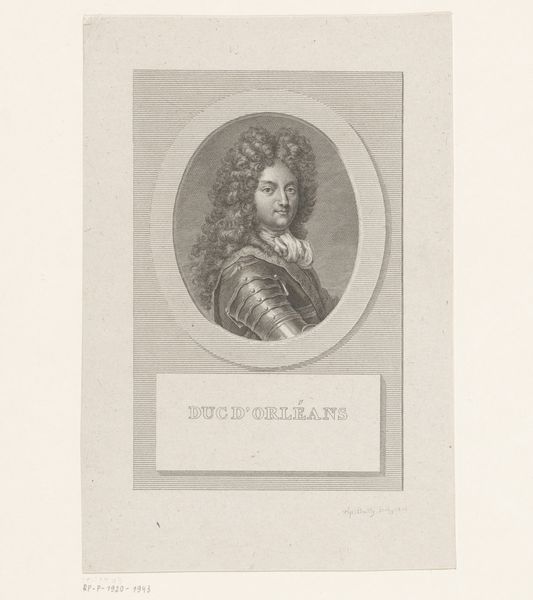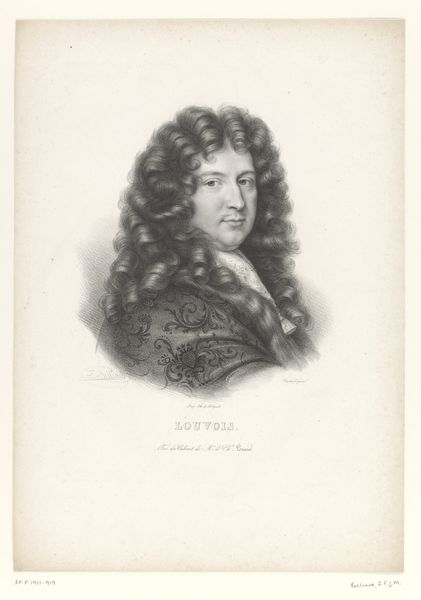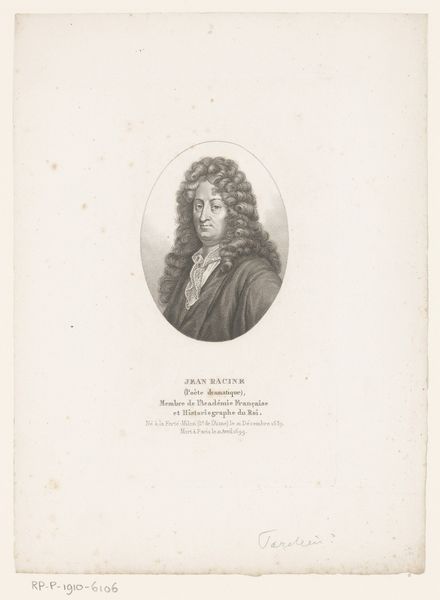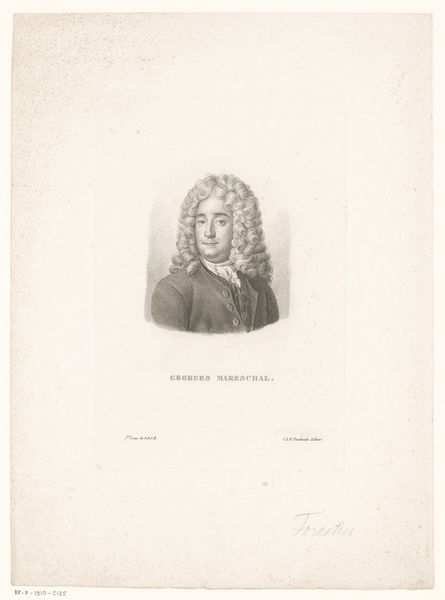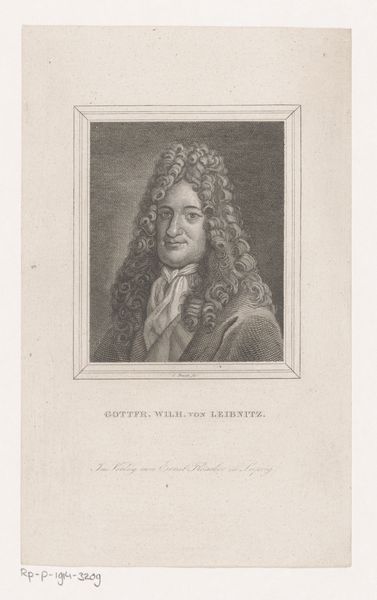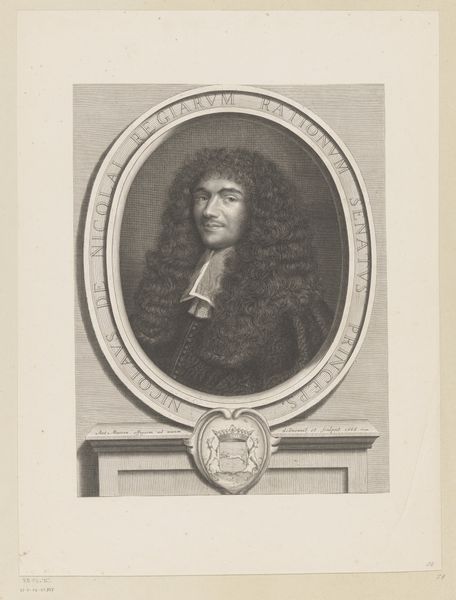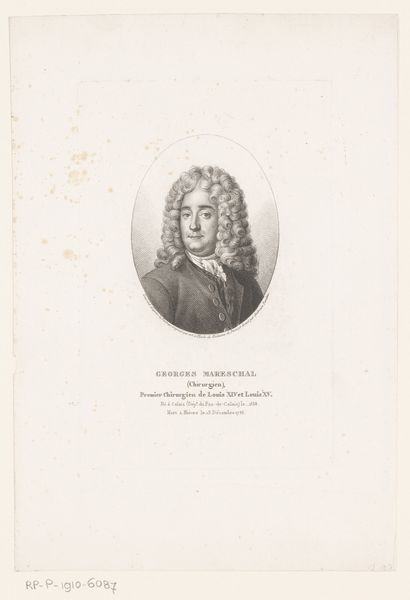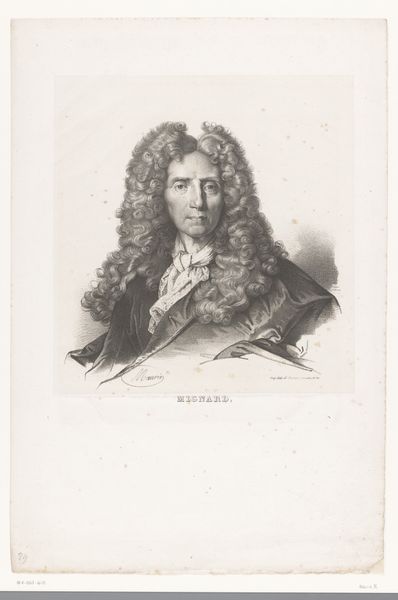
Dimensions: height 412 mm, width 290 mm
Copyright: Rijks Museum: Open Domain
Jean Pierre Sudre made this portrait of Claude Perrault in the 19th century, using the technique of lithography. Lithography involves drawing on a flat stone or metal plate with a greasy substance, then applying ink which adheres only to the drawn areas. It's a printmaking method that democratized image production, as it allowed for relatively quick and inexpensive reproduction. In this portrait, the qualities of lithography give a soft, tonal quality to the image, almost like a pencil drawing. Sudre would have needed considerable skill to capture the likeness of Perrault, and especially to convey the texture of his elaborate wig and draped fabric. The lithographic process lacks the sharp, clean lines of engraving. The choice of lithography speaks to a shift in artistic production, away from unique, hand-crafted artworks and towards mass production and wider distribution. The technique itself becomes a part of the artwork's meaning, reflecting the changing social and economic conditions of the 19th century. Appreciating the material and process gives us a deeper understanding of this portrait.
Comments
No comments
Be the first to comment and join the conversation on the ultimate creative platform.
